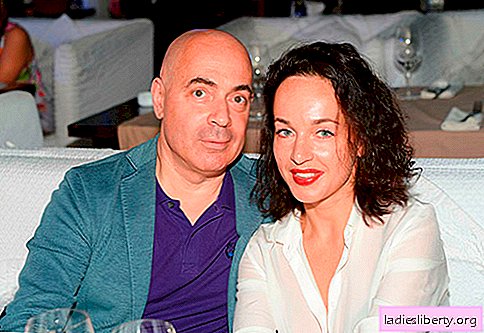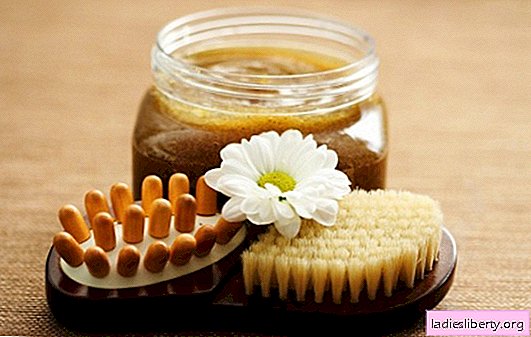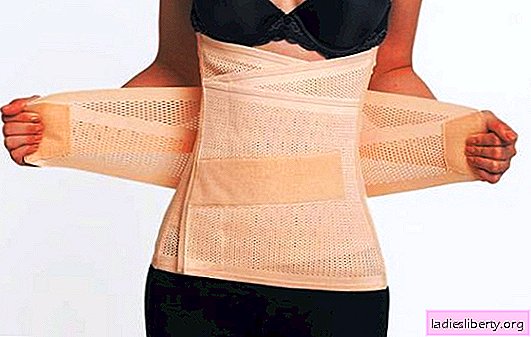
“Star of Bethlehem”, “beautiful euphorbia”, “Christmas star”, “beautiful poinsettia” - all these are the names of a tropical plant that has become a symbol of Catholic Christmas and New Year not only in the USA and Europe, but also in Russia.
Under natural conditions, it grows in the form of a bush, reaching a height of about 3 meters.
Bright bracts of leaves collected in rosettes in the form of a star around small, nondescript flowers give it decorativeness.
Poinsettia belongs to the Euphorbiaceae family, a distinctive feature of which is the poisonous milky juice that stands out when the plant is damaged.
The Aztecs used bright bracts as a dye for cosmetics and fabrics, and juice - for the manufacture of medicines.
Poinsettia got its name in honor of the doctor and botanist J.R. Poinsett, who, having discovered it in southern Mexico, began to cultivate it in his greenhouses.
The wild species of the "Christmas star" has red bracts. Subsequently, breeders bred varieties with a different color:
• Pink - Maren, Pink, Dorotee, Festival Rouz, Freedom Pink;
• White and cream - Annett Heg White, Sonora White, Winter Rose, Polar Bear;
• Shades of red - Premium Red, Winter Rose, EuroGlory, Black Beauty, Carousel Dark Red, Olympi, Peterstar;
Bracts can also be bicolor (Jingle Bells) and variegated (with streaks, fringing): Sonora White Glitter, Silverstar Marble, Carousel Pink, Jester Pink.
In addition to coloring the bract leaves, the poinsettias differ in leaf shape: So, in the varieties of the Carousel group, bracts have wavy edges, and Strawberry and Cream immediately have two bonuses: in addition to the unusual multi-colored color, the leaves have very dissected edges.
At home, caring for poinsettia is not complicated. However, in order for this tropical beauty to please with its bright colors, it is necessary to adhere to certain rules.
Poinsettia: home care - breeding, pruning, transplanting, dormancy
Breeding
At home, poinsettia is propagated only vegetatively. In the spring, apical cuttings are cut (each of them should have 5 internodes - approximately 15 cm in length) and put in warm water for 10-15 minutes. The milky juice released during this process is drained with absorbent paper or cotton, and the sections are dusted with charcoal powder. Prepared cuttings are rooted in water or in a substrate from equal parts of peat and sand. After this, the seedlings should be placed in a greenhouse or covered with a jar or bag. To accelerate the appearance of roots, stimulants are used - root, heteroauxin. The optimal temperature regime for rooting is + 24-28ºС. Plantings periodically moisturize and ventilate. After about 3-4 weeks, roots appear, active growth begins. After 2 weeks after rooting, you can begin to fertilize young plants. For better tillering, the shoots are nipped over 5-6 leaves. This procedure is carried out regularly to give the bush a compact form. For the uniform development of the crown, periodically turn the pot with the plant. The grown seedlings are transferred into separate pots.
Pruning
In the spring (in March), poinsettia begins an active growth of new shoots. So that the euphorbia at the same time does not stretch out and not "bald", but has a compact shape, they carry out forming pruning. Weak shoots are removed on the plant, the remaining strong stems are cut off by 1/3. Cut pieces are used for rooting. After this, the euphorbia is placed in a bright place to stimulate the growth of new shoots.

New shoots appeared on cropped poinsettia
As soon as they grow to 10-12 cm, they are pinched. This procedure contributes to the tillering of the plant: the more branches on it, the more flowers will come later - poinsettia blooms only on new shoots.
Transfer
It is better to transplant poinsettia in the spring when new shoots grow after pruning. A new pot is taken a little more than the previous one (if inserted into each other, the gap between them should be 1-1.5 cm). In pots, drainage is mandatory.
Rest period
Poinsettia has a pronounced period of rest. Its duration is 2 months. During this period, watering is reduced, but without allowing the soil to completely dry out. The plant is kept at a temperature of + 12-14 ° C.
Attention! When carrying out cuttings, caution should be exercised: poinsettia juice is toxic and can cause irritation of the skin, gastrointestinal tract, hay fever. Therefore, all manipulations with milkweed are best done with gloves.
Poinsettia home care - soil, lighting, flowering conditions
The soil
Milkweed needs light, drained soil: its root system does not tolerate moisture stagnation and needs a large amount of oxygen. In waterlogged soil, it easily rots. The composition of the soil acceptable for poinsettia is as follows: 3 parts of turf and 2 parts of leafy soil, peat and sand equal in volume.
Lighting
Poinsettia does not tolerate direct sunlight - preferably bright and diffused lighting. In summer, it can be placed outdoors: balcony, terrace, garden.
Temperature and humidity
During the rest period of poinsettia, + 12-14 ° C is enough, during flowering - at least + 16 ° C. In other periods of vegetation, spurge feels good at + 18-25ºС. As a tropical plant, the Christmas Star needs a lot of humidity. Therefore, it should be sprayed more often with tepid water, and a container with wet crushed stone, pebbles, expanded clay should be placed in the pot with the plant.
Flowering conditions
Euphorbia flowers themselves do not represent any decorative value: they are small and nondescript. Bright bracts matter. To achieve their appearance, it is necessary to organize a "short day":
• Within 2 months (October-November) the plant for laying flower buds is kept in the dark for 12-14 hours;
• At dusk, the pot is covered with a box, a dark bag or heavy paper;
• Shelter is removed in the morning;
• After 8 weeks of such stimulation, the euphorbia is returned to normal care;
• After 2 weeks, bright bracts appear;
• It is worth remembering that poinsettia forms flowers only on new shoots. Therefore, in order to have flowering plants, one will either have to grow new specimens or rejuvenate the existing euphorbia.
Poinsettia home care - top dressing and watering
Watering
In the summer, poinsettia is watered abundantly as the soil dries. In winter, watering is reduced - the substrate should be slightly moist.
It is important not to leave excess water in the pan - it must be drained to avoid root decay.
Top dressing
During the period of active vegetation (from spring to autumn) poinsettia is fed with complex mineral fertilizer every 2 weeks. If the plant has been transplanted, then it can be fertilized no earlier than 30 days after transplantation. During stimulation of milkweed for flowering (October - November) increase the dose of phosphorus and potassium.
Poinsettia at home: why does it die?
The cause of premature yellowing and falling of leaves is dry air. To raise it, the plant must often be sprayed with settled water from the spray gun.
If poinsettia drops leaves, then this can happen for several reasons:
• Natural process before the dormant period;
• Improper watering: overflow or insufficient moisture;
• Low humidity in the room;
• The pot is on a draft;
• The plant froze during transportation;
• Inadequate lighting.
With soil salinization, the leaves turn yellow at the edges, turn brown and dry. Soil with excessive salt content is covered with a whitish coating. In this case, it is necessary to loosen the earth more often, stop fertilizing, and provide good drainage during spring transplanting in a pot.
If the leaves are deformed, bent, “holes” are formed on them, this picture is typical with a lack of molybdenum and an incorrect level of acidity. Poinsettia feels good at a soil pH of 5.5-6.2.

Manifestation of molybdenum deficiency in poinsettia
Uneven coloring and spotting of covering leaves (brackets) appears with sharp changes in temperature and humidity, irregular top dressing, and lack of lighting.
If the appearance of poinsettia does not correspond to the variety in shape, density, color of the leaves, then such plants are called chimeras. The cause of the abnormalities is a spontaneous cell mutation. It is not contagious for other plants, treatment is not necessary.
Marble leaves are a sign of the mosaic virus transmitted by sucking pests. The disease cannot be treated, so the affected plant will have to be destroyed.
Poinsettia with improper care is predisposed to various types of rot:
• With root and stem rot, leaves fade and turn yellow; edges of old leaves turn brown. The roots become soft, their tissues are stratified.
• Brown rot affects mainly planted cuttings. For prevention, they are sprayed with Rovral fungicide after planting.
• Gray rot develops in high humidity and low temperature. Most often, it affects the plant during staining of bracts. Dark spots appear on inflorescences, leaves and stems, on which mold with sporangia further grows. Affected areas of the plant are removed, and he himself is sprayed with a fungicidal solution, for example Topsin-M, Fundazol.
When poinsettia is affected by powdery mildew, a whitish coating forms on the leaves, under which the tissues turn brown and die. To combat the disease, fungicides such as Fitosporin-M, Topaz, Skor, Alirin-B are used.

Powdery Mildew Poinsettia
Sometimes on the leaves of the "Christmas star" one can observe enations - ugly outgrowths that look like scales. Scientists have not found the reason for such changes. We can assume the effects of low temperatures, viral infections, genetic mutations. The plant of enations itself does not bring inconvenience.
In the presence of flower thrips on the leaves, punctures are visible, around which the leaf tissue is deformed and twisted. To destroy these pests, insecticides are used (Fitoverm, Fufanon, Actellik, etc.).
If mealybugs and scabies are wound up on milkweed, to begin with, they can be removed mechanically with a swab dipped in alcohol or washed with soapy water. If there are a lot of them, then treatment with insecticides (Aktara, Fitoverm, Vermitek) is justified.
Bracts die, brown tips of leaves, weak trunk are characteristic phenomena with calcium deficiency. To eliminate this, it is useful to water the euphorbia with a solution of calcium nitrate (1.5 g / l of water).
Lack of molybdenum is manifested by chlorosis of leaf blades and the boring of their edges. In this case, it is necessary to maintain a pH level of 5.5-6.5 and feed poinsettia with complex fertilizer with trace elements.
In dry air, a spider mite, which lives on the underside of leaves, can settle on the “Christmas star”. Places of his bites have a yellowish color. As a result of his activity, the leaves fade, dry and fall off. To combat it, the plant is sprayed with a solution of green soap. If this measure does not help, then use acaricides (Actellik, Sunmayt, Fufanon).
Another common pest is whitefly - a small flying insect that looks like a moth. Settles on the underside of leaves. Larvae feed on plant sap, adults carry viral diseases. To get rid of whiteflies, poinsettia is sprayed with insecticides (Actara, Confidor).
Black velvety coating on the leaves of milkweed indicates the presence of soot fungus. It settles on the secretions of sucking pests. In tissues coated with mushroom plaque, photosynthesis is impaired. To prevent the appearance of this fungus, it is necessary to fight harmful insects.











